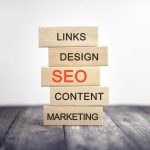Why use Google Ads?
The world of marketing has shifted dramatically in recent years, and Google Ads is one of the platforms responsible for this shift. Indeed, Google Ads is one of the most effective paid online advertising platforms available.
Google Ads enables businesses to communicate with anyone who uses Google to conduct online searches for information, products, and services. When used correctly, Google Ads has the potential to direct a large number of people to your website who are specifically looking for what you have to offer. If you do not currently have a Google Ads account for your business, you should seriously consider setting one up.
So you want to know the answer to “Why use Google Ads?”
Here are 10 Google Ads Benefits
Google it. When people have a question, the first thing they would do is to Google it.
The search engine processes an utterly ridiculous 2+ trillion searches every year. That equates to more than 5 billion searches per day. Among them are people seeking solutions to problems that your business may be able to provide. If they’ve ever used the internet, they’ve almost certainly Googled an answer to a question. And if you can assist them in locating the solution they are looking for, even if it’s with an ad, they are more likely to choose you than your competitor.
Capabilities that enable a wide variety of targeting
Google has something for every business and every buyer at every stage.
Bidding on wide keyword search terms like “accounting software” allows you to complete the top of your funnel with two easy yet powerful techniques:
Utilize your post-click landing page to collect their information and send them informative content that establishes your authority. If they do not convert, retarget them with remarketing software until they do.
Bidding on long-tail keyword search terms like “accounting software for freelance marketers” will help you grow your customer base. These are usually less expensive and worth it to attract customers looking for exactly what you offer. Long, specialized keyword searches usually have greater intent. And it’s this intent that makes Ads so useful.
Harness intent
The main distinction between people you reach with Google Ads and other forms of advertising is their intent. People aren’t looking for answers to the issues that are in their everyday lives. They want newborn pics, vacation photos, and family updates. And advertising to someone who doesn’t want to be advertised to is more likely to be ignored.
But you aren’t advertising to those who don’t want to be advertised on the search network. You are advertising to people searching for something specific. And instead of disrupting their internet browsing, your ad helps them find the answer.
According to some experts, search ads are a sort of inbound marketing, as opposed to outbound advertising, because they assist someone who has already made the first step of searching for something. Let prospects come to you, then help them find solutions, and you’ll be ready to take their money when they’re ready.
Complete control of your campaigns at all times
Purchasing advertising space using software — commonly referred to as “programmatic advertising” — is easy for even one employee to do. With a bit of knowledge, they’ll be able to initiate and terminate campaigns, target the appropriate people at the right price, and do so instantly. In this manner, you may redirect your resources and attention to more important concerns.
Complete control of your budget
You have complete and total control over your Google Ads campaign’s budget. Where you can manage everything from the maximum bid on an ad to the campaign’s daily budget.
Additionally, you can specify the monthly spending limit and adjust the budget based on the performance graph. When an advertisement performs exceptionally well, you can increase its allocation to achieve the desired results. It also works in reverse to reduce ad spending on low-performing advertisements. However, you can also halt it immediately to avoid losing another dime.
Google Ads displays results in an easy-to-understand format.
To get better, you must first figure out where you’re doing wrong. Some analytics dashboards make it impossible to identify what that is.
Fortunately, Google simplifies and clarifies everything. You can find out the basics, such as the number of clicks and impressions you’ve received, as well as your keyword spending budget, by integrating Google Analytics. Using this tool, you can track everything visitors do on your website, from where they came from to what they did next.
Generates quicker results
When you begin with Google, your chances of leapfrogging all organic results on a search engine results page dramatically increase, and it also becomes more accessible. There is no prolonged search for links that will slightly boost your page’s ranking; there is no obsessing over your post-click landing page’s keyword density.
Increase brand awareness
To develop trust with your visitors, you need to reinforce your brand name, personality, reputation, and so on. The more regularly you repeat these points, the stronger your brand will become, and the more trust prospects will have in you. And it’s trust that’ll lead to sales and long-term customers.
Even if customers don’t click on your ads, they’ll see your brand, tagline, products, and whatever else you utilize your copy and extensions to promote through the Ads search network. It is possible to prioritize brand exposure by showing your ad to an even greater number of individuals through the Ads advertising display network. Both approaches allow advertisers to amplify the positive aspects of their company while also building a stronger brand.
Increase the number of conversions you get.
The post-click landing page experience is a metric used by Ads to determine how well your website meets the needs of individuals who click your ads—quickly and effortlessly. Your post-click landing page is the URL visitors reach after clicking on your ad, and the experience you provide influences your Ad Rank, and thus your cost per click and position in the ad auction. Your advertisements may appear less frequently if they link to websites that provide a lousy user experience.
Increase your return on investment by experimenting with various bidding strategies.
A compelling post-click landing page designed to pacify Google is not the only factor contributing to your advertising ROI. To assist you in achieving specific marketing objectives while spending as little money as possible, the Ads team has developed numerous distinct bidding tactics.
- To drive traffic to your website, Google advises you to use CPC bidding.
- This “cost per thousand viewable impressions” bid strategy is what Google suggests if you want to raise awareness about your company.
- Advertising campaigns aimed at driving conversions, such as purchases or sign-ups, should use CPA bidding.



